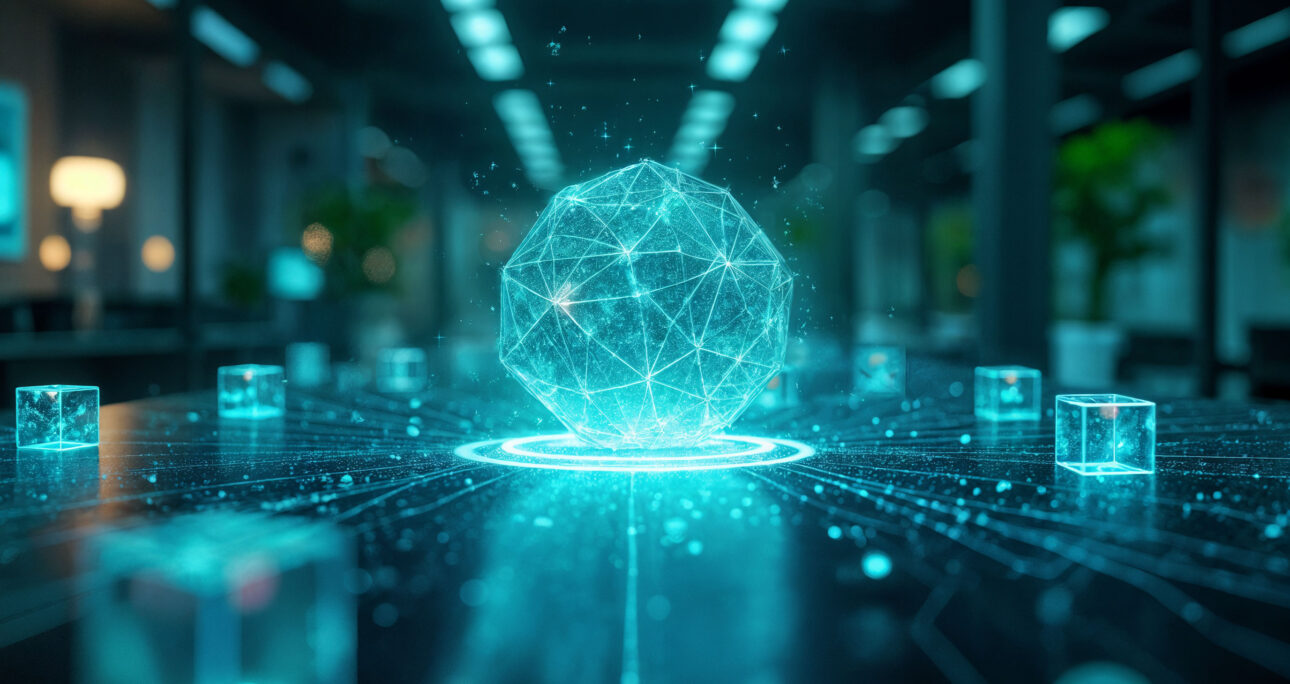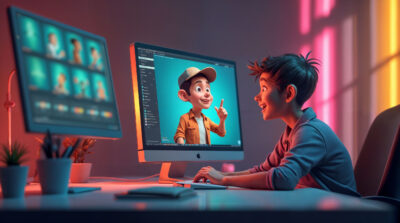Exploring Sparc3D’s Impact on 3D Modeling
Welcome to another exciting dive into the world of digital innovation, brought to you by the AB-Arts team. Today, we’re exploring Sparc3D, a revolutionary framework for high-resolution 3D shape modeling that’s making waves in tech circles. Led by our visionary team leader, Anthony Beth, with 25 years of experience in digital media creation, and supported by developer lead Anthony Debrackeleire, we’re here to break down how Sparc3D is shaping the future of 3D modeling. Let’s get started!
Introduction to Sparc3D
Sparc3D is not just another 3D modeling tool; it’s a research-driven framework developed collaboratively by Nanyang Technological University and Math Magic. The project, accessible via its official page at https://lizhihao6.github.io/Sparc3D/, focuses on high-resolution 3D shape modeling using sparse representations. This approach is particularly exciting for industries like gaming, 3D printing, virtual reality (VR), and augmented reality (AR), where detail and efficiency are paramount.
As of July 14, 2025, Sparc3D is making headlines for its ability to handle complex geometries, such as open surfaces, disconnected components, and intricate shapes, with state-of-the-art reconstruction fidelity. This is a big deal for creators looking to push the boundaries of digital media, and we’re here to unpack how it works and why it matters.
The Core Components of Sparc3D
At its heart, Sparc3D combines two innovative components: Sparcubes and Sparconv-VAE. Let’s break them down:
- Sparcubes: This is a sparse deformable marching cubes representation that transforms raw 3D meshes into high-resolution surfaces. We’re talking up to 1024³ resolution, which means incredibly detailed outputs with arbitrary topology. It uses signed distance and deformation fields scattered onto a sparse cube, allowing for differentiable optimization. In simpler terms, it’s like turning a rough 3D sketch into a polished, high-definition model, ready for any application.
- Sparconv-VAE: Short for Sparse Convolutional Variational Autoencoder, this is the first modality-consistent VAE built entirely on sparse convolutional networks. It enables efficient and near-lossless 3D reconstruction, making it ideal for high-resolution generative modeling through latent diffusion. Think of it as an AI wizard that rebuilds 3D shapes with precision, preserving every ridge and curve, while keeping computational costs low.
Together, these components make Sparc3D a powerhouse for 3D modeling, reducing training and inference costs while integrating seamlessly with latent diffusion models for scalable, high-resolution 3D generation.
Key Achievements and Applications
Sparc3D isn’t just theoretical; it delivers real-world results. Research suggests it achieves state-of-the-art reconstruction fidelity, especially on challenging inputs like open surfaces and disconnected components. It preserves fine-grained shape details, which is crucial for applications where every detail counts, such as character models for games or custom objects for 3D printing.
The framework’s efficiency is another highlight. By leveraging sparse representations, it reduces memory usage and computational demands, making it accessible for creators with high-end GPUs, like NVIDIA A100s. It’s also designed to integrate naturally with latent diffusion models, opening doors for text-to-3D and image-to-3D generation, which we’ve seen in platforms like sparc3d.art and sparc3d.org.
Here’s a quick comparison of Sparc3D’s features versus traditional methods, based on our analysis:
| Feature | Sparc3D | Traditional Methods |
|---|---|---|
| Resolution | Up to 1024³ | Often limited to lower resolutions |
| Handling Complex Geometries | Excellent (open surfaces, disconnected) | Struggles with complexity |
| Computational Efficiency | Reduced costs, 4× faster training | Higher costs, slower training |
| Integration with Generative AI | Seamless with latent diffusion | Often requires separate pipelines |
| Output Readiness | Watertight, print-ready meshes | May need cleanup for printing |
This table highlights why Sparc3D is a game-changer, especially for professionals in game development, VR/AR, and 3D printing. For instance, it can generate watertight meshes ready for game engines or 3D printers, saving hours of manual cleanup.
The Research Behind Sparc3D
The foundation of Sparc3D lies in its 2025 research paper, titled “Sparc3D: Sparse Representation and Construction for High-Resolution 3D Shapes Modeling” by Zhihao Li et al., available on arXiv at https://arxiv.org/abs/2505.14521. This paper details how Sparc3D addresses the challenges of 3D object synthesis, which is notoriously harder than 2D image generation due to the unstructured nature of mesh data and the cubic complexity of dense volumetric grids.
The paper introduces Sparc3D as a unified framework that tackles these issues by combining sparse representations with advanced AI techniques. It’s open-source, with a GitHub repository at https://github.com/lizhihao6/Sparc3D, though note that code release is subject to approval from Math Magic, ensuring ethical and legal considerations are met.
Real-World Impact and Community Adoption
Since its introduction, Sparc3D has been adopted in various tools and services. For example, Hugging Face hosts a space for Sparc3D at https://huggingface.co/spaces/ilcve21/Sparc3D, allowing users to generate high-resolution 3D models from input data. Platforms like sparc3d.art and sparc3d.org offer interactive experiences, showcasing its potential for rapid prototyping, custom object creation, and more.
Creative Shrimp, in an article dated June 18, 2025, praised Sparc3D for its ability to generate 3D models from single images, filling in missing geometry and revolutionizing workflows for asset creation in Blender and beyond. However, they noted that while the surface quality is impressive, retopology and texture generation may still need manual work, indicating room for future improvements.
Challenges and Limitations
No technology is perfect, and Sparc3D has its challenges. It performs best with high-end GPUs, which might limit accessibility for smaller studios. Some users have reported minor artifacts, like small holes in complex meshes, requiring cleanup. Additionally, its performance is tied to training datasets like ShapeNet and Objaverse, potentially limiting rare shape generation. Compared to competitors like Hunyuan 3D-2.5, it lacks native texture synthesis, which could be a drawback for certain applications.
Why It Matters for Digital Creators
At AB-Arts, we’re thrilled about Sparc3D’s potential. For game developers, it means faster asset creation with detailed, watertight geometry for engines like Unreal or Unity. For 3D printing enthusiasts, it offers print-ready models with sub-millimeter precision. And for VR/AR creators, it ensures immersive environments with reliable collision detection.
As Anthony Beth, our team leader, often says, “Innovation in digital media isn’t just about tools; it’s about empowering creators to tell stories in new dimensions.” Sparc3D is doing just that, and we’re excited to see how it evolves.
Conclusion
Sparc3D is a beacon of innovation in high-resolution 3D modeling, blending cutting-edge research with practical applications. Whether you’re a game developer, a 3D printing hobbyist, or a VR pioneer, it’s worth exploring. Check out the project page at https://lizhihao6.github.io/Sparc3D/ for more, and let’s keep pushing the boundaries of what’s possible in digital media. Stay tuned for more insights from the AB-Arts team!




